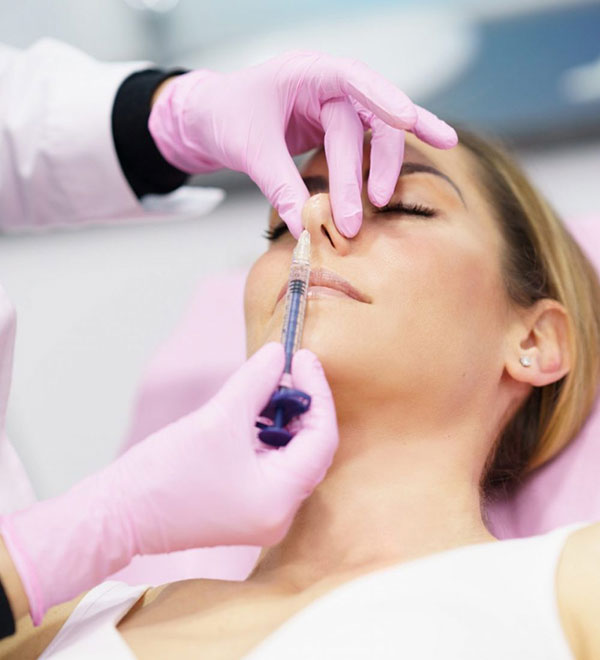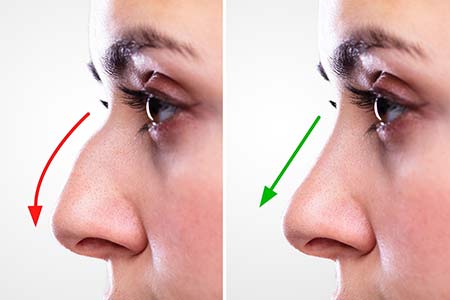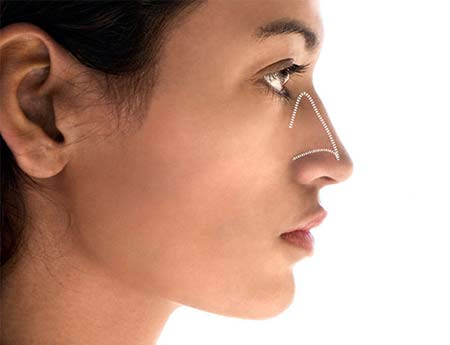Rhinoplasty in Nagpur: 3 things to know about getting your nose done

The rhinoplasty in Nagpur is a surgical procedure which consists in remodeling of the nasal septum and nasal pyramid for aesthetic or functional purposes.
The aesthetic perception of one’s face and the acceptance of one’s image are often compromised by the irregularity of a nose which can also undermine a patient’s sociability.
How is the nose made and what it is for?
The nose is an organ placed in the center of the face, it represents the initial part of the respiratory tract and has a dual activity:
- respiratory, the inhaled air initially passes into the nasal cavities through the nostrils where it is heated, humidified, and purified and continues its journey towards the lungs.
- olfactory, the upper mucosa records the olfactory signals and through the bulb and the olfactory nerve they are transmitted to the brain.
The nose is made up of bones, the nasal bones, and the jaw, and of cartilage, which is the tip of the nose.
Inside the nose there are the two nasal cavities, long canals lined with mucosa, which on one side flow into the nostrils and on the other communicate, through two openings called choane, with the upper part of the pharynx (called nasopharynx).
The mucous membrane that covers the nasal cavities is divided into two parts:
- olfactory or higher composed of olfactory cells, olfactory bulbs, and olfactory nerves.
- or lower respiratory system composed of a vascular network, for heating the inhaled air, and of mucus and cilia, which humidify and purify it.
The nasal septum separates the two pits and is made up of cartilage and bone.
What is rhinoplasty and what is it for?
The rhinoplasty or nose reshaping surgery in Nagpur is one of the most popular surgeries and allows you to change the shape and size of the nose in order to improve the harmony of the face without distorting its appearance.
Specifically, cosmetic surgery of the nose allows you to:
- increase or decrease the size of the nose (too small, too large, or too wide).
- change the shape of the back (sunken or with the presence of a hump or hump).
- change the shape of the tip (too wide, too narrow, or too long).
- change the width of the nostrils.
- change the angle between the forehead and the nose.
- change the angle between the nose and upper lip.
- correct post-traumatic defects.
- correct birth defects.
- solve breathing problems.
The techniques of rhinoplasty
Based on the history of the operation, the patient’s ethnicity and the technique used, rhinoplasty is called:
- primary.
- secondary.
- ethnic.
- closed.
- open.

Primary or secondary rhinoplasty
The rhinoplasty in Nagpur is primary when it is executed for the first time, while the secondary aim to eliminate those defects that could not be corrected with the first intervention or that have been caused by a previous rhinoplasty.
It may happen that due to the importance of the trauma suffered or the severity of the malformation, some patients need several interventions to correct or resolve the problem.
Closed rhinoplasty
The closed rhinoplasty technique is indicated to correct small defects, especially on the tip, and noses without large asymmetries or large deviations of the nasal pyramid.
Closed rhinoplasty consists in making incisions inside the nose, passing through the nostrils thus avoiding scars.
Open rhinoplasty
Unlike the closed one, open rhinoplasty is chosen to correct important defects of the tip such as asymmetries, bulbous tip, “pinocchio” nose, “pinched-nose”, bifid or deviated tip or to correct outcomes of cleft lip and palate, in secondary or post- traumatic, therefore defects of the osteo-cartilage structures.
This technique consists of incisions made inside the nose passing through the nostrils, as in closed rhinoplasty, but also an incision on the columella at the base of the nasal pyramid thus avoiding scars.
Since there is no single technique valid for all types of surgery, a good surgeon knows and knows how to perform both techniques according to the defect to be corrected.
In addition, rhinoplasty in Nagpur can also be performed in association with functional nose surgery:
- rhino septoplasty.
- nasal polyp surgery.
- turbinate surgery.
The post-surgery
The operation is performed under general anesthesia and can last about 1 hour depending on the technique used and the defect to be corrected.
After surgery, the patient immediately wears a rigid brace for 7 days which will then be replaced with paper plasters for a further 7 days.
In the 2 days following the surgery it is recommended to rest with the head raised and then normal activity can be resumed, however, avoiding:
- strenuous activities.
- saunas and baths.
- sun exposure to avoid brown pigmentation.
- very hot food and drink.

Over the course of 15 days, bruises and subzygomatic and eyelid swellings tend to disappear and for 30 days after the operation it is not recommended to use glasses and carry out “dangerous” activities that could cause trauma to the nose.
At what age is it possible to undergo rhinoplasty in Nagpur?
Surgery on the nose can only be performed after 16 in women and 18 in men.
When is it best to have surgery?
The rhinoplasty in Nagpur can theoretically be performed at any time of the year, but it is better to avoid the hot months of summer, such as July and August, because the heat favors edema and hypertrophy of scar tissues.
Risks of rhinoplasty
In addition to the general complications common to any surgery (anesthetic risk, infection, bleeding), rhinoplasty presents the risk of specific complications such as bleeding, edema of the nasal mucosa and dark circles.
- bleeding: at the end of the rhinoplasty, nasal swabs are placed inside the nostrils, the purpose of which is to reduce bleeding and limit the risk of hematoma, which are subsequently removed after 24 hours.
Nosebleeds (nose bleeds) can often occur soon after removal.
- edema of the nasal mucosa: aesthetic rhinoplasty, even if it does not make changes to the functional part of the nose, could create a temporary worsening of breathing, mainly due to edema of the nasal mucosa.
- bruises and dark circles: it may happen that swelling, or bruises may remain visible for more than 15 days and in subjects with particularly light skin, the formation of dark circles due to the blood pigment may persist for several months.
